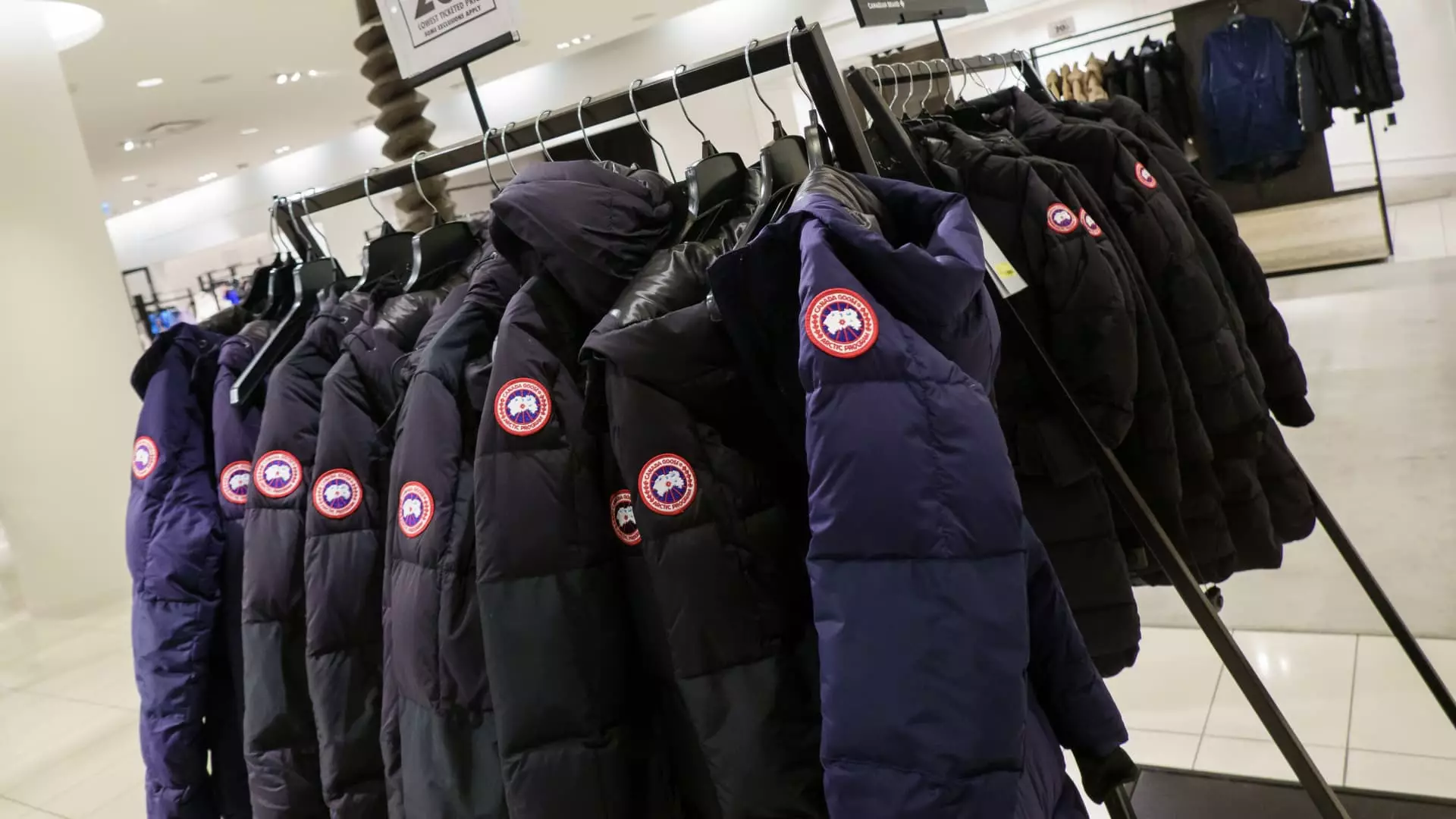In a surprising turn of events, Canada Goose, a renowned purveyor of luxury outerwear, witnessed its shares soar nearly 20% on a recent Wednesday following a fiscal fourth-quarter earnings report that exceeded analysts’ predictions. This surge, which reached an impressive high of 28% during intraday trading, underscores a nuanced narrative—a blend of optimism punctuated by the pervasive cloud of “macroeconomic uncertainty.” While the immediate temporal victory is noteworthy, the underlying systemic challenges that led to the reluctance in offering a fiscal outlook for 2026 merit significant scrutiny.
The reality is stark; while Canada Goose’s fiscal performance—a revenue of CA$384.6 million against expectations of CA$356.4 million—reflects solid brand fortitude, the broader market remains jittery. In an era where every tiny fluctuation in consumer spending can trigger dramatic shifts in stock fortunes, Canada Goose’s leadership opted for prudence over bravado by withholding forecasts for the future. This decision reflects a recognition of the unpredictable global trade dynamics currently threatening consumer confidence and spending behavior.
Manufacturing in a Shifting Landscape
A crucial detail emerging from the earnings call is the company’s manufacturing strategy. With an impressive 75% of its units produced domestically in Canada, Canada Goose is positioned advantageously to sidestep President Trump’s tariffs due to compliance with the United States-Mexico-Canada Agreement. However, even with the reassurance from Chief Operating Officer Beth Clymer that the impact of European production tariffs would be minimal, there remains an unsettling undercurrent.
Tariffs, although they may not materially affect financial projections directly, create a ripple effect that complicates revenue generation strategies. Canada Goose’s management reiterates the company’s historical ability to weather economic tempests, from the fallout of the 2008 financial crisis to the relentless disruptions caused by the COVID-19 pandemic. But one must wonder: how many of these economic storm clouds can they confront before the brand’s resilience is tested beyond its limits?
Challenging Times for the Luxury Sector
The luxury retail sector, known for its opulence and indisputable cachet, is not wholly devoid of worry as evidenced by the slowdown in sales reported by titans like LVMH, Burberry, and Kering. This context casts an imposing shadow over Canada Goose, which is traditionally linked with cold-weather gear that commands hefty price tags—often exceeding $1,000. The company’s endeavor to diversify its product offerings, venturing into non-winter categories including rain jackets and warm-weather apparel, reveals an adaptive strategy, albeit one tinged with risks.
Additionally, the introduction of eyewear featuring AI-powered virtual try-on tools is significant. Touted as a “key milestone” in broadening product categories, this innovation could be either a powerful step towards extending brand relevance throughout the year or a misstep into an oversaturated market. The constant strategic pivots essential to maintaining consumer interest might only serve to distract from core competencies if not executed flawlessly.
The Specter of Economic Uncertainty
As Canada Goose gears up for what it eagerly anticipates as peak revenue periods, the company faces an unpredictable landscape marked by economic volatility. CFO Neil Bowden’s remarks allude to the “indirect effects of these actions on the global economy,” suggesting a broader malaise influencing not just Canada Goose but the entirety of the luxury sector. The confidence expressed by CEO Dani Reiss, claiming that the brand will continue to triumph through adversity, must be tempered with a healthy dose of skepticism.
As consumers wrestle with inflationary pressures and changing financial priorities, will luxury brands like Canada Goose manage to maintain their allure? The gap between aspiration and accessibility is narrowing, creating a perilous tightrope that luxury retailers must navigate with caution. The question stands: How resilient can Canada Goose continue to be in such a turbulent environment? While the stock skyrocket—and the optimism in Clymer and Reiss’s statements—may suggest a temporary reprieve, the ethos of resilience will be put to the test amid shifting economic tides. Thus, the journey toward sustained relevance and resilience persists in being fraught with uncertainty, making both investors and consumers watchful of Canada Goose’s next move.



Leave a Reply